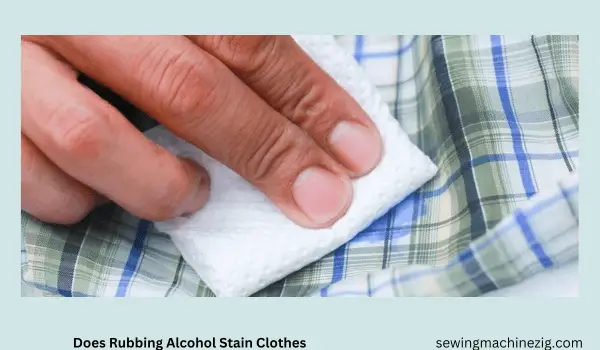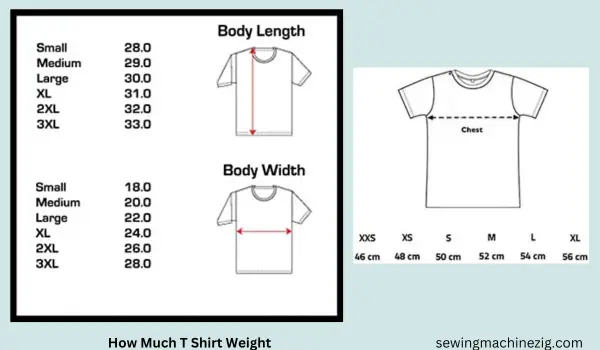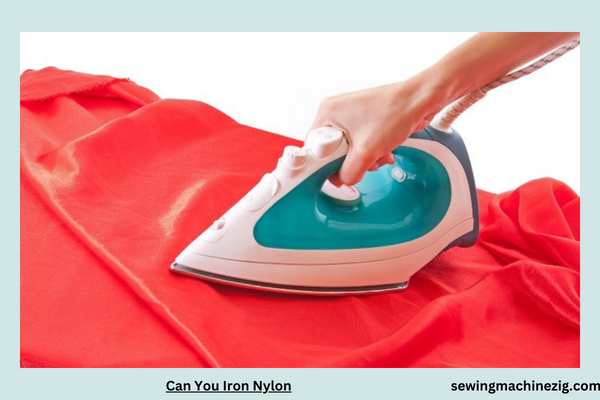
Navigating the care instructions for different fabrics can be a household challenge, and when it comes to nylon, the question arises: Can you iron Nylon, a versatile and durable synthetic material, that finds its way into our wardrobes and homes. This article explores the often-misunderstood realm of ironing nylon, addressing the dos and don’ts to ensure your garments and fabrics maintain their integrity.
Delving into the intricacies of this synthetic wonder,”Can you iron Nylon“, we unravel the mysteries surrounding ironing nylon and provide practical insights for those seeking to keep their nylon items wrinkle-free.
Can You Iron Nylon Detailed Answer
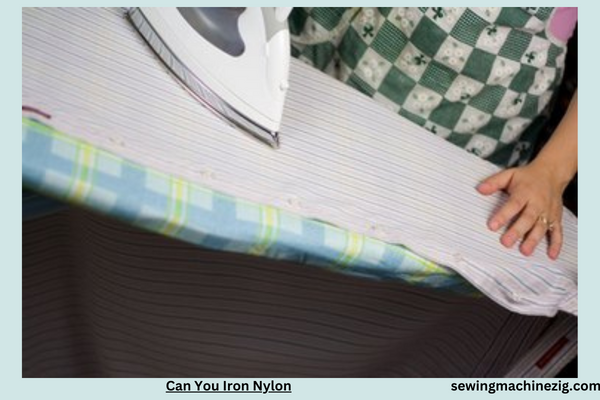
Ah, the ever-present question in the world of fabrics and fashion: Can you iron Nylon? Picture this – you’ve got a beautiful nylon garment, maybe a sleek blouse or a pair of lightweight, stylish pants, and it’s looking a bit crinkled after being tucked away in your closet.
Fear not, fellow fashionista! In this detailed guide, Can you iron Nylon, we’ll embark on a journey through the delicate realm of nylon and ironing, uncovering the secrets to smoothing out those wrinkles without causing any fashion faux pas.
Understanding the Allure of Nylon: A Brief Prelude
Before we dive into the ironing adventure, let’s take a moment to appreciate the wonder that is nylon. A synthetic polymer, nylon is celebrated for its durability, flexibility, and resistance to wrinkles. Its smooth, shiny surface adds a touch of sophistication to various clothing items, making it a beloved choice for designers and fashion enthusiasts alike.
The Burning Question: Can You Iron Nylon?
Now, let’s address the burning question – can you iron nylon without turning your favorite blouse into a melted mess? The short answer is yes, you absolutely can. However, the devil is in the details, my fashion-forward friend. Nylon has a lower melting point compared to some other fabrics, so a little caution and finesse are in order.
Step-by-Step Guide to Ironing Nylon: A Seamless Process
- Check the Care Label: The golden rule before embarking on any ironing escapade is to check the care label on your nylon garment. The care label is like the fashion oracle’s decree – it guides the recommended ironing temperature and any other special instructions.
- Set the Iron to Low: Nylon is a bit like a delicate flower – it prefers a gentle touch. Set your iron to a low heat setting. Most irons have a synthetic or nylon setting precisely for this purpose. Remember, patience is key – slow and steady wins the wrinkle-banishing race.
- Use a Pressing Cloth: To add an extra layer of protection to your beloved nylon piece, place a clean, thin cotton cloth (preferably an old pillowcase or a piece of muslin) over the garment before ironing. This acts as a barrier, preventing direct contact between the iron and the fabric.
- Steam Away Wrinkles: If your iron has a steam function, consider using it. A gentle burst of steam can work wonders in coaxing out stubborn wrinkles. Hold the iron about an inch above the fabric and let the steam do its magic.
- Iron Inside Out: To be doubly cautious, especially if your garment has embellishments or a delicate print, turn it inside out before ironing. This not only protects the outer surface but also ensures that any lingering wrinkles on the inside are smoothed out.
- Keep it Moving: The cardinal rule of ironing nylon is to keep the iron in motion. Don’t let it linger in one spot for too long, as nylon can be susceptible to heat. Move the iron smoothly across the fabric, gliding like a figure skater on the ice.
- Test a Small, Inconspicuous Area: If you’re feeling a bit apprehensive, and who wouldn’t when it comes to a cherished wardrobe piece, test the iron on a small, inconspicuous area. This is like a dress rehearsal – you’ll know exactly how your nylon garment reacts to the heat.
Additional Tips for Ironing Nylon with Panache
- Avoid Direct Contact with the Iron: If you’re still feeling a bit cautious, you can place a layer of aluminum foil between the iron and the nylon fabric. This adds an extra buffer, preventing any direct contact and ensuring a smoother glide.
- Hang it Right After Ironing: Once you’ve triumphed over the wrinkles, hang your nylon garment immediately. This helps maintain its freshly pressed look and prevents new creases from forming. It’s like giving your outfit a red carpet moment – let it shine!
- Store with Care: Proper storage is the unsung hero in the war against wrinkles. Hang your nylon garments in a cool, dry place, and if possible, use padded hangers to maintain their shape.
But Wait, Can All Nylons Be Ironed?
Now, here’s where the plot thickens – not all nylons are created equal. Some nylon fabrics, like nylon spandex or stretch nylon, are more sensitive to heat. If your garment contains a blend of materials, check the care label for any specific instructions related to ironing. A little detective work upfront can save you from a potential fashion disaster.
Troubleshooting: What if Something Goes Awry?
In the world of ironing, even the most seasoned fashion aficionados can face a hiccup or two. But fear not – we’ve got some troubleshooting tips up our stylish sleeves:
- Shiny Spots: If you notice shiny spots after ironing, you might have applied too much heat. Try placing a damp cloth over the shiny area and lightly pressing it with a cool iron to restore the fabric’s original texture.
- Melting Mishap: If, heaven forbid, a small section of your nylon has succumbed to the heat and melted, all is not lost. You can trim away the melted threads with scissors, creating a neat and discreet fix.
- Wrinkles Persist: If the wrinkles are putting up a stubborn fight, try hanging the garment in the bathroom while you take a hot shower. The steam from the shower can work wonders in relaxing those persistent creases.
InSummary: Mastering the Art of Ironing Nylon
In the grand tapestry of fashion care, ironing nylon is an art form, a delicate dance between heat and finesse. Armed with the right knowledge, a dash of caution, and perhaps a touch of fashion bravado, you can confidently transform your crinkled nylon garments into sleek, runway-ready masterpieces.
So, the next time you find yourself pondering, “Can you iron Nylon?” – remember, with a low heat setting, a pressing cloth, and a few expert tips, you can banish those wrinkles and let your nylon pieces reclaim their rightful place in the spotlight of your wardrobe. Happy ironing, fashion maestro!
How To Get Wrinkles Out Of Nylon
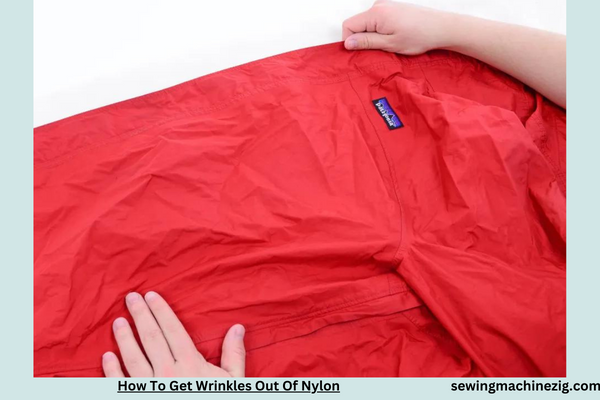
Ah, the classic conundrum – your favorite nylon garment, a sleek and stylish companion, has fallen victim to the clutches of wrinkles. Fear not, fellow fashion aficionado, for we are about to embark on a journey to rescue your nylon treasure and restore it to its former smooth glory.
In this detailed guide, we’ll unravel the secrets of banishing wrinkles from nylon, ensuring your wardrobe remains a wrinkle-free haven.
Understanding the Nature of Nylon Wrinkles: A Brief Prelude
Nylon, with its unique combination of durability and flexibility, is a beloved fabric in the world of fashion. However, like any textile hero, it is not immune to the occasional crease or wrinkle. The key to releasing nylon from the clutches of wrinkles lies in a gentle and strategic approach.
Step-by-Step Guide to Releasing Wrinkles from Nylon: A Smooth Process
- Assess the Fabric: Before diving into the de-wrinkling process, take a moment to assess the type of nylon you’re dealing with. Check the care label for any specific instructions regarding heat settings or special considerations. Different nylons may have varying tolerances to heat, and a bit of foresight can prevent a potential fashion fiasco.
- Set Up Your Ironing Station: Prepare a clean, flat surface for ironing. Ensure your iron is in good working condition and set it to a low heat setting. Most irons have a synthetic or nylon setting – opt for this to avoid subjecting your precious fabric to excessive heat.
- Use a Pressing Cloth: The secret weapon in the war against wrinkles is a pressing cloth. This can be an old pillowcase, a piece of muslin, or any thin, clean cotton fabric. Place it over the wrinkled area before ironing to add a protective layer and prevent direct contact between the iron and the nylon.
- Turn the Nylon Inside Out: For an extra layer of caution, especially if your garment has delicate embellishments or a particular finish, turn it inside out before ironing. This not only shields the outer surface but also allows you to target wrinkles from the fabric’s underside.
- Steam It Up: If your iron has a steam function, now is the time to let off some steam – quite literally. Hold the iron about an inch above the fabric and release short bursts of steam. This helps relax the fibers and makes the wrinkles more amenable to smoothing out.
- Keep It Moving: Remember, in the world of nylon and ironing, movement is key. Keep the iron in constant motion, gliding smoothly over the fabric. Avoid dwelling on one spot for too long to prevent overheating and potential damage.
- Test a Small Area First: If you’re a bit apprehensive, especially with a new or delicate nylon item, test the iron on a small, inconspicuous area. This mini-test run ensures you understand how the fabric reacts to the heat, giving you the confidence to proceed.
Alternatives to Traditional Ironing: A Wrinkle-Release Symphony
- Steamer Magic: If you’re not keen on ironing or want a gentler approach, consider using a garment steamer. Hang the nylon garment and let the steamer work its magic, relaxing the wrinkles with a burst of steam. This is particularly effective for delicate fabrics.
- Shower Steam Method: Embrace the power of steam without the need for fancy equipment. Hang your nylon garment in the bathroom while taking a hot shower. The steam from the shower can work wonders in releasing wrinkles.
- Wrinkle-Release Spray: Enter the unsung hero of quick fixes – wrinkle-release spray. A spritz of this magic elixir, followed by a gentle pull on the fabric, can coax out wrinkles without the need for heat. Simply spray, tug, and watch the wrinkles vanish.
- Hairdryer Hack: In a pinch, a hairdryer can become your ally in the fight against wrinkles. Set it to a low heat setting and aim it at the wrinkled areas, maintaining a safe distance to prevent overheating.
- Nylon-Spandex Blend: If your nylon garment has a spandex blend, exercise caution. Spandex is sensitive to heat, and excessive ironing may affect its elasticity. Opt for lower heat settings and consider using a pressing cloth to protect the fabric.
- Nylon with Prints or Embellishments: Delicate prints or embellishments require extra care. Turn the garment inside out, place a pressing cloth over the adorned area, and iron gently. This preserves the design while addressing wrinkles.
- Sheer Nylon Fabrics: Sheer nylon fabrics demand a delicate touch. Lower heat settings, a pressing cloth, and a brief touch-up can maintain the fabric’s transparency while removing wrinkles.
Post-Wrinkle Care: Maintaining Nylon Elegance
- Hang It Right After Ironing: Once the wrinkles have surrendered, hang your nylon garment immediately. This prevents new creases from forming and maintains the freshly pressed look.
- Store with Care: The battle against wrinkles extends beyond the ironing board. Hang your nylon garments in a cool, dry place, and use padded hangers to preserve their shape. A little TLC goes a long way in preventing future wrinkle skirmishes.
- Avoid Overcrowding: In your wardrobe kingdom, give each nylon piece its own space. Overcrowding can lead to wrinkles, as fabrics are forced into close quarters and may not have the breathing room they deserve.
Troubleshooting: What if Wrinkles Persist?
Even in the most well-executed de-wrinkling endeavors, some stubborn creases may persist. Here are a few troubleshooting tips:
- Dampen and Press: Lightly dampen the wrinkled area with water and press it with a cool iron. The moisture can aid in relaxing the fibers.
- Hang Overnight: Sometimes, a bit of gravity can work wonders. Hang the garment overnight, and the gentle pull of gravity may help smooth out lingering wrinkles.
- Professional Help: If all else fails, consider taking your nylon garment to a professional dry cleaner. They have the expertise and equipment to handle delicate fabrics and stubborn wrinkles.
In Summary: Mastering the Art of Wrinkle Liberation for Nylon
In the grand tapestry of fashion care, liberating nylon from the clutches of wrinkles is an art form – a delicate dance between heat and finesse. Armed with the right knowledge, a touch of caution, and a dash of creativity, you can confidently transform your crinkled nylon garments into sleek, runway-ready masterpieces.
So, the next time you find yourself facing a nylon wrinkle challenge, armed with a low-heat iron, a pressing cloth, and a few expert tips, you can banish those wrinkles and let your nylon pieces reclaim their rightful place as smooth, elegant stars in the constellation of your wardrobe. Happy de-wrinkling, fashion virtuoso!
Is It Safe To Iron Ripstop Nylon And Packcloth?
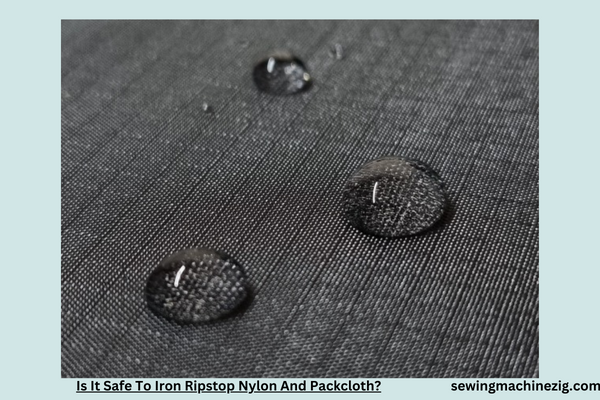
Embarking on the journey of caring for different fabrics can feel like navigating a textile maze. If you find yourself pondering the safety of ironing ripstop nylon and packcloth, you’ve entered the realm of durable, versatile materials often used in outdoor gear and backpacks. Fear not, intrepid fabric explorer!
In this comprehensive guide, we’ll unravel the mysteries surrounding the art of ironing these robust fabrics, ensuring your outdoor gear remains both functional and aesthetically pleasing.
Understanding Ripstop Nylon and Packcloth: A Sturdy Prelude
Before we dive into the intricacies of ironing, let’s acquaint ourselves with the protagonists of this textile adventure – ripstop nylon and packcloth. These fabrics are the unsung heroes of outdoor enthusiasts, known for their durability, resistance to tears, and versatility.
The Burning Question: Is Ironing Safe for Ripstop Nylon and Packcloth?
Now, the million-dollar question – can you wield an iron with confidence when it comes to these rugged fabrics? The short answer is yes, but as with any fabric escapade, the devil is in the details. Ripstop nylon and packcloth are typically composed of synthetic fibers, making them more amenable to heat than some natural fabrics.
Step-by-Step Guide to Safely Ironing Ripstop Nylon and Packcloth: A Smooth Process
- Check the Care Label: The cardinal rule before embarking on any ironing expedition is to consult the care label on your ripstop nylon or packcloth item. This tiny guide is your textile compass, offering insights into the fabric’s tolerance for heat and specific care instructions.
- Set the Iron to Low: Both ripstop nylon and packcloth fare well with a gentle touch. Set your iron to a low heat setting, usually labeled as synthetic or nylon. This minimizes the risk of damaging the fabric while still allowing you to smooth out any wrinkles or creases.
- Use a Pressing Cloth: The secret weapon in the arsenal of safe ironing is a pressing cloth. This can be a thin cotton fabric or an old pillowcase. Lay it over the ripstop nylon or packcloth before ironing to create a protective barrier. This simple step prevents direct contact between the iron and the fabric.
- Turn Inside Out: For an extra layer of caution, turn your ripstop nylon or packcloth item inside out before ironing. This technique not only safeguards the outer surface but also allows you to address wrinkles from the fabric’s underside.
- Steam with Caution: If your iron comes equipped with a steam function, exercise caution. Hold the iron a short distance from the fabric and release steam in brief bursts. Steam can be an ally in relaxing wrinkles without subjecting the fabric to prolonged heat.
- Keep It Moving: The golden rule of ironing ripstop nylon and packcloth is to keep the iron in motion. Avoid leaving it in one spot for too long to prevent overheating. Move the iron smoothly and steadily across the fabric to achieve the desired wrinkle-free result.
Additional Tips for Ironing Success: A Fabric Odyssey
- Test a Small Area First: If you’re feeling a bit apprehensive, especially with a new or cherished item, test the iron on a small, inconspicuous area. This mini-test run provides insights into how the fabric responds to heat and helps build confidence.
- Avoid High Heat Settings: The resilient nature of ripstop nylon and packcloth doesn’t mean they can withstand scorching temperatures. Stick to low or medium-heat settings to ensure a safe ironing experience.
- Hang Immediately After Ironing: Once the wrinkles have succumbed to your ironing prowess, hang your ripstop nylon or packcloth item immediately. This helps maintain the freshly pressed look and prevents new creases from forming.
- Store with Care: Proper storage is the unsung hero in the battle against wrinkles. Hang your ripstop nylon and packcloth items in a cool, dry place, allowing them to breathe. Avoid cramming them into tight spaces to prevent unwanted creases.
Troubleshooting: What if Something Goes Awry?
Even in the most well-intentioned ironing endeavors, mishaps can occur. Fear not; we’ve got some troubleshooting tips up our textile sleeves:
- Shiny Spots: If you notice shiny spots after ironing, you may have applied too much heat. Place a thin, damp cloth over the affected area and press it with a cool iron. This can help restore the fabric’s texture.
- Melting Mishap: In the unfortunate event of a small melting mishap, trim away the melted threads with scissors. This creates a tidy fix, and your outdoor gear can continue its adventures unscathed.
- Persistent Wrinkles: If wrinkles persist, consider hanging the item in the bathroom while taking a hot shower. The steam can work wonders in relaxing stubborn creases.
In Summary: Mastering the Art of Ironing for Rugged Fabrics
In the grand tapestry of textile care, ironing ripstop nylon and packcloth is an art form – a delicate dance between heat and caution. Armed with the right knowledge, a touch of finesse, and a dash of adventurous spirit, you can confidently wield the iron and keep your outdoor gear looking as resilient as it performs.
So, the next time you find yourself contemplating the safety of ironing these rugged fabrics, armed with a low-heat iron, a pressing cloth, and a few expert tips, you can navigate the fabric wilderness and emerge victorious. Happy ironing, textile trailblazer!
Conclusion
In the intricate ballet of garment care, the question of ironing nylon unravels a delicate performance. As heat and fabric converge, the synthetic fibers gracefully yield to the pressing choreography, preserving the garment’s integrity.
The guide’s wisdom, a virtuoso’s notes on textile care, proves invaluable in this fabric pas de deux. So, in the ballet of ironing possibilities, the query of “Can you iron Nylon?” finds its response in a seamless performance, ensuring a wrinkle-free denouement in the realm of garment care.
FAQs: Can You Iron Nylon?
Q1: Is it safe to iron nylon fabrics, and what precautions are necessary?
A1: Yes, you can iron nylon, but it’s crucial to take certain precautions. When ironing nylon, it’s important to use a low heat setting to avoid damage. Can you iron nylon without a pressing cloth? It’s advisable to use a pressing cloth to prevent direct contact between the iron and the nylon fabric, minimizing the risk of melting or scorching.
Q2: Can ironing nylon cause damage, and are there specific nylon types that require extra care?
A2: Ironing nylon can cause damage if not done properly. Can you iron Nylon with intricate details like prints or embellishments? It’s recommended to iron such nylon items inside out or with a cloth to protect the surface. Additionally, delicate or sheer nylons may require a lower heat setting to prevent any adverse effects.
Q3: What’s the proper ironing technique for nylon garments, and why is it important to follow guidelines?
A3: When ironing nylon garments, it’s important to use a gentle touch and avoid excessive pressure. Can you iron nylon with steam? It’s generally safe to use steam on nylon, but maintaining a moderate distance between the iron and the fabric is important to prevent potential damage. Following these proper ironing techniques ensures the longevity and appearance of nylon items.
Q4: Can ironing nylon remove wrinkles effectively, and are there any alternatives to ironing for nylon fabrics?
A4: Yes, ironing is an effective way to remove wrinkles from nylon. Can you iron nylon without direct contact? Alternatively, using a steamer is a viable option. It’s important to note that while ironing is a common method, alternatives like steaming can be gentler on certain nylon fabrics, maintaining their texture and integrity.“Can you iron Nylon“
Q5: Are there specific nylon blends that require special attention during the ironing process?
A5: Yes, certain nylon blends may demand special attention during ironing. Can you iron nylon that’s blended with other materials like spandex or elastane? It’s important to check garment labels and follow specific care instructions, as blends may have different heat resistance levels. Being mindful of the fabric composition is important for successful ironing without compromising the quality of the garment. “Can you iron Nylon“
Q6: Can ironing nylon lead to melting, and what steps can be taken to prevent such issues?
Q6: Can ironing nylon lead to melting, and what steps can be taken to prevent such issues? A6: Ironing nylon can lead to melting if it’s not done with care. Can you iron nylon with a high heat setting? It’s not recommended. To prevent melting, it’s important to set the iron to a low or synthetic heat setting and test on a small, inconspicuous area before ironing the entire garment. This precautionary step is important to avoid irreversible damage.


